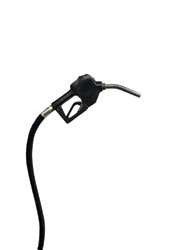
As gasoline prices top $4 per gallon, all of us in Bassville are singing the Fuel Burnin’ Blues. While it’s hard to keep a bass fisherman down, fuel costs are a definite pain in the pocketbook and, no doubt, they have put millions of budget-conscious anglers on a shorter leash.
Unfortunately, the better you are outfitted for the sport, the more you feel the pain at the pump, fore and aft. Big, powerful trucks and jet-fast bass boats add up to a dizzying flurry of numbers at the refueling station.
“In full-size trucks, people have been demanding power, performance and payload (capacity) over the years,” says Colin Price, manager for technology and environmental communications for Nissan’s trucks. “When fuel prices climbed to over $3 per gallon, you could see a little change in preference from half-ton to light pickups. But the full-size guy, like your serious bass fisherman, won’t go too far down.”
Fortunately, truck makers have added efficiencies to go along with impressive performance enhancements in recent years.
In 2007, Nissan upped the power of the Titan’s all-aluminum 5.6-liter V8 engine to 317 hp and 385 foot-pounds of torque. The 2008 edition Titan is a more fuel-efficient model, sporting a number of improvements aimed at better fuel efficiency.
Performance itself translates into better fuel economy, notes Terry Scroggins, a member of the Toyota Fishing Team. He says his 2008 Tundra, which he calls “the best tow vehicle there is,” delivers as much power as a diesel engine vehicle yet is less expensive to operate.
“The truck drives so easy and effortlessly, you don’t have to drive it aggressively to get it up to speed even in hilly terrain,” says the man called “Big Show” on the Elite Series tour.
The price of diesel fuel is soaring, too, but Chrysler touts the greater fuel economy of diesel over gas engines. Boat owners know the Dodge Ram 2500 and 3500 best — the latter with a towing capacity of 16,000 pounds.
Both are powered by a 6.7-liter Cummins diesel engine.
But Chrysler’s introduction of a 3-liter V6 diesel to the Jeep Grand Cherokee has given boat owners a smaller, more fuel-efficient option with a 7,400-pound towing capacity. “It’s a perfect vehicle for bass boat owners,” says Nick Kappa, who heads advanced technologies communications for Chrysler Corp. “It’s an all-around great vehicle that gives you a 30 percent bump in fuel economy.”
General Motors’ wide range of tow-capable vehicles includes 10 in its Chevrolet truck line alone. GM still claims its Silverado offers top fuel efficiency for its V8-powered full-size pickup and that its full-size Tahoe SUV “delivers best-in-class fuel economy.” But boat-owning customers eyeing fuel efficiency also are looking at GM’s Yukon and Tahoe, and their hybrid versions. “The hybrids deliver fuel economy comparable to a 4-cylinder sedan,” says Randy Fox, GMC spokesman.
Ford calls the 2009 version of its long popular F-150 truck “the ultimate towing vehicle.” According to Becky Sanch, truck communications manager, Ford’s entire V8 lineup will boast a 1.5 mpg improvement in fuel efficiency, along with six-speed transmission and additional performance and safety features. Notable is the F-150’s integrated trailer braking control system that controls braking and vehicle shift points in hilly conditions.
“We’ve also looked at weight reduction and aerodynamics.”
That said, no matter what brand tow vehicle you drive, the following tips will save you a bundle come fill-up time.
1. Accelerate smoothly. Aggressive driving is one of the worst fuel-guzzling habits. Needless pumping of the accelerator pedal translates into extra fuel stops.
“I pretend I have an egg under my gas pedal when I drive,” says Earl Bentz, founder and president of Triton Boats, who has reduced his towing vehicle’s fuel consumption by 20 percent by reducing highway speeds, monitoring tire pressures, avoiding jackrabbit starts and controlling acceleration. “I raced for 13 years, and I sometimes felt I had to beat the little old lady next to me at the stoplight across the intersection. Why?”
Develop a controlled and seamless transition from brake to accelerator. Stop the pumping and jumping.
“The stomp (the accelerator) and stab (the brake) habit pours a lot of fuel into the engine, and it’s not comfortable for passengers either,” says Nissan’s Price. “Maintain cruising speeds with a constant accelerator position … and avoid unnecessary stopping and braking.”
Chad Harp, spokesman for Toyota’s truck division, emphasizes the importance of on-the-road awareness to maintain smooth, fuel-efficient travel.
“Monitor the flow of traffic to plan your moves well ahead,” says Harp. “This is a habit that not only enhances fuel economy but also increases your margin of safety and reduces wear and tear on your vehicle.”
2. Monitor your highway speed. Fuel economy suffers at speeds above 55 mph and plummets significantly at speeds over 70. “The faster you go, the more wind you are fighting,” explains Chrysler’s Kappa. “You’ll save your power train and engine life while improving fuel economy — and reduce emissions, too.”
Richard Miller, product planning regional program manager for Nissan’s Titan, recommends watching rpm on today’s vehicles. “If you can keep your rpm at 2,000 or less, you will improve your fuel economy greatly,” he says.
“Even a 10 mile-per-hour decrease on the highway saves me $50 or $60 during the course of a trip,” notes bass pro Scroggins.
3. Maintain tire pressure and wheel bearings. Always have your truck’s feet in tip-top shape by keeping tires at optimum tire pressure and maintaining wheel bearings. Underinflated tires increase friction or “rolling resistance,” thus adding to fuel consumption.
“The most overlooked aspect of fuel economy is tire pressure,” says GMC’s Fox. “It can be a great contributor to controlling fuel economy.”
And don’t forget about the trailer.
“When you store a trailer or vehicle for a long period, you lose tire pressure,” says Price. “Also, if you’ve had a seal leak, water will get into the wheel bearings and cause rust or corrosion. Keep bearings lubricated and in good working order. Again, it comes down to decreasing rolling resistance.”
Some truck owners overinflate tires to increase fuel economy. According to Price, drivers may get away with slightly overinflated tires, but he recommends adhering to manufacturer recommendations. “When we tune tires, the maximum pressure listing is not an arbitrary number. We have to optimize a lot of factors. It doesn’t mean you can’t get less rolling resistance by overinflating a little, but you will get a rougher ride.”
Trailer tires can handle higher pressures than passenger vehicles, notes Kappa. “The (bumpier) ride of the trailer won’t affect vehicle passengers.”
4. Use A/C sense. Toyota’s Harp recommends using the air conditioning and defroster only as needed as a general rule. “The air conditioner and defogger, which automatically turns the air conditioner on in many new vehicles, use additional energy and decrease fuel economy,” he says.
Highway driving, especially under windy conditions, may pose an exception to the air-conditioner rule, notes Nissan’s Miller. “When cruising at highway speeds, it is more economical to use the air conditioner and leave the windows closed to reduce drag.”
5. Plan ahead. Gas-engine vehicles operate more effectively once they’ve warmed to the task. “Try to combine several short trips in order to minimize cold engine starts,” says Harp. “Numerous short trips will reduce any vehicle’s fuel economy. Every time a vehicle is started cold, it uses more fuel while warming up.”
6. Observe proper maintenance. The basics of vehicle maintenance also contribute to better fuel economy. Keep your engine tuned and maintain the truck’s transmission. Change oil at proper intervals, and adhere to the recommended periodic maintenance schedule.
Keep front wheels aligned, as well. “Improper alignment increases tire wear and lowers fuel economy,” adds Nissan’s Price.
7. Give ’em some space. “Increase the distance between you and the vehicle in front of you,” advises Chrysler’s Kappa. “It’s safer. It also gives you greater coasting distance so you don’t lose as much forward energy through your brakes.”Adjust trailer brakes properly, as well. Dragging brakes on the back end will drag down fuel economy upfront.
8. Be geared correctly. Always operate your vehicle in the gear range appropriate to the driving situation and road conditions. On level roads, shift into high gear as soon as is practical.
“On your 4×4, use 4H or 4L position only when necessary,” says Miller. “Four-wheel drive operation lowers fuel economy.”
9. Lose weight. Cut down on unnecessary weight in both your boat and road vehicle. “If you have something you don’t need, leave it at home or at the campsite,” says Kappa. “And fuel up near your destination, if you can.
Why drag around extra pounds of fuel?”
10. Stay under cover. Wind resistance will make you pay at the pump. Add a tight-fitting cover to your craft.
Remove seats from their pedestals in transit.
“Anything you can do to improve the aerodynamics of that boat on the trailer will help,” says Kappa.
Open truck beds, too, are a drag. New ABS hard plastic covers are light and effective.
Can’t Keep A Good Fisherman Down
Four bucks a gallon? A mere pittance!
Hardly. Nevertheless, nearly 6 out of 10 fishermen in the United States are planning an out-of-state fishing trip in the next 12 months, according to a study of 2,000 anglers conducted in March by AnglerSurvey.com, a service of Southwick Associates (www.SouthwickAssociates.com).
In the November issue, Part 2 of the series will highlight ways to save gas while boating, and identify the most fuel efficient outboards on the market.




